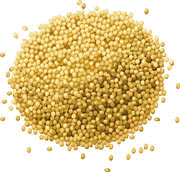International Sorghum and Millet Collaborative Research Support Program (INTSORMIL CRSP)
Date of this Version
9-3-2008
Document Type
Article
Citation
INTSORMIL Impact (September 3, 2008)
Abstract
Sorghum is a major cereal grain in Mozambique with a cultivated area of 2.7 million hectares. It is considered as a food security crop in most of the provinces in the country, especially in regions where rainfall is a limiting factor for maize and rice production. However, due to a lack of seed and poor distribution of improved sorghums farmers continue to use their local varieties which have low productivity potential (0.2 - 0.6 ton/ha). To increase productivity and provide food security there is an urgent need for (1) the development of varieties with higher yield potential, (2) improved crop production technology, especially integrated soil fertility management practices, (3) effective and environmentally safe pest and disease management strategies for sorghum in the field and in storage, and (4) aggressive programs for the transfer of sorghum technology to sorghum producers. To mitigate the current food crisis these activities are being conducted through an extensive collaborative effort between INTSORMIL, NGOs, international programs and Mozambican national programs.
INTSORMIL scientists from the University of Nebraska, West Texas A&M University and Texas A&M University and the National Agrarian Research Institute (IIAM) of Mozambique are collaborating with ICRISAT in the introduction of new germplasm; with the national NGOs, USEBA based in Maputo in the south and IKURU based in Nampula Province in the north, and Lozanne Seed Companies, Pannar to promote seed production and commercialization of sorghum through farmer groups; with INGCN (National Institute for the Management of Disasters) to supply seed to small household farmers for food production; with CARE International to increase crop production and promote the commercialization of sorghum-based products and with the Mozambique district extension services to promote the adoption of improved sorghum production technology by farmers.


